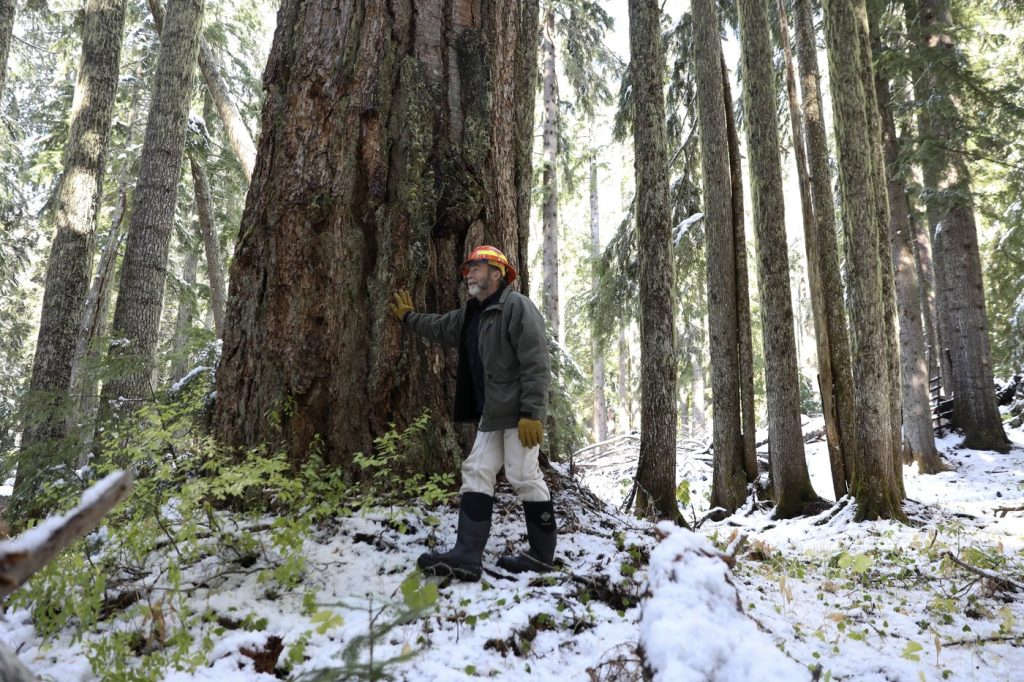BILLINGS, Mont. (AP) — The Biden administration has unexpectedly abandoned its plan to protect old-growth forests after facing significant opposition from Republicans and the timber industry. U.S. Forest Service Chief Randy Moore announced the decision in a letter to forest supervisors, marking the abrupt end of a years-long effort aimed at enhancing the protection of ancient trees increasingly threatened by climate change.
The initiative was launched by President Joe Biden through an executive order on Earth Day in April 2022, and had garnered support from conservationists who viewed it as one of the most significant forest preservation endeavors in decades. This proposal underwent extensive public comment periods and internal government analyses and was on the verge of being finalized.
The plan sought to restrict logging in old-growth forests, allowing exceptions only in certain areas to mitigate wildfire risks. However, the timber industry and Republican lawmakers voiced strong objections, arguing that existing protections were sufficient and warning that the plan could severely impact logging companies dependent on affordable timber from public lands.
During the administration's planning phase, GOP lawmakers introduced legislation aimed at blocking the proposed protections. In his letter, Moore acknowledged the valuable lessons learned from this pioneering effort to identify old-growth trees across public lands. He noted the mixed feedback regarding the administration's approach, which was criticized for not considering ecological variations among different ecosystems.
Montana Republican U.S. Senator Steve Daines praised the withdrawal of the plan as a "victory for commonsense local management" of forests. Most old-growth stands were lost to logging during the nation’s development, yet scattered remains persist across the U.S., particularly in California, the Pacific Northwest, and parts of the Rocky Mountains. Alaska contains larger expanses of old growth, notably within the Tongass National Forest.
There is broad consensus regarding the necessity of preserving old-growth forests, both as significant environmental entities and as critical carbon sinks that help mitigate climate change. Alex Craven, the forests campaign manager for the Sierra Club, emphasized the "scientific necessity and public expectation" for the protection of these forests, indicating that formal protections are a matter of when rather than if.
In recent years, wildfires have devastated areas of old-growth forests across the western U.S., claiming thousands of giant sequoias. Since 2000, wildfires, pests, and diseases have caused nearly 1,400 square miles (3,600 square kilometers) of old-growth tree losses. Logging on federal lands has contributed to approximately 14 square miles (36 square kilometers) of old-growth forest being cut down, with industry representatives arguing this statistic indicates that further restrictions are unnecessary.
Bill Imbergamo from the Federal Forest Resource Coalition criticized the administration’s proposal as "legally dubious and ecologically flawed," stating that older forests are prevalent in the national forest system, with many already protected from logging. He asserted that old-growth forests require management strategies to enhance their health and resilience in the face of threats like fire, insects, and disease.
The future of the administration's plan appeared uncertain if it had gone into effect, particularly after the first term of President Donald Trump, when federal officials attempted to facilitate logging in extensive areas of West Coast forests. Federal wildlife officials under Biden reversed that decision in 2021, finding that political appointees under Trump had relied on flawed science to justify reducing protected habitats crucial for the struggling northern spotted owl, which has witnessed a population decline due to old-growth forest loss in Oregon, Washington, and California.










